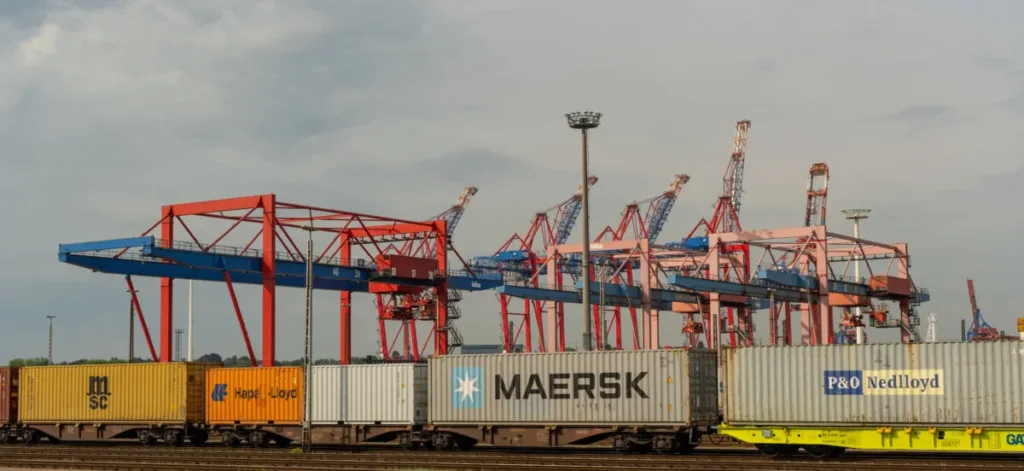“Teaming up with Maersk will help us to further boost the quality we deliver to our customers,” says Rolf Habben Jansen, CEO of Hapag-Lloyd.
The new cooperation between Hapag-Lloyd and Maersk will comprise a fleet pool of around 290 vessels with a combined capacity of 3.4 million containers (TEU); Maersk will deploy 60% and Hapag-Lloyd 40%.
CEO of Maersk Vincent Clerc adds:
“We are pleased to enter this cooperation with Hapag-Lloyd, which is the ideal ocean partner on our strategic journey. By entering this cooperation, we will be offering our customers a flexible ocean network that will be raising the bar for reliability in the industry. This will strengthen our integrated logistics offering and meet our customers’ needs.”
🛳News: We’ve embarked on an operational cooperation with @HapagLloydAG to deliver a flexible & interconnected ocean network. The new agreement called Gemini Cooperation starts Feb 2025.
PR: https://t.co/aoCEXpTMzh
#Maersk #hapaglloyd #logistics #shipping pic.twitter.com/2vFF0q9jIY— Maersk (@Maersk) January 17, 2024
As a part of the agreement, the two companies aim to provide schedule reliability of above 90% once the network is fully phased in.
“Gemini Cooperation” will be a long-term operational cooperation starting in February 2025, however, both companies retain their flexibility to operate independently when needed, scaling capacity outside the network to meet customer demands.
The cooperation will leverage Hapag-Lloyd and Maersk’s combined unparalleled global networks and terminal presence, and the extensive logistics expertise of our teams. The cooperation comprises around 290 vessels with a combined capacity of 3.4 million containers (TEU); Maersk will deploy 60% and Hapag-Lloyd 40%
“Gemini” will cover 7 trades (Asia / US West Coast, Asia / US East Coast, Asia / Middle East, Asia / Mediterranean, Asia / North Europe, Middle East – India / Europe and Transatlantic) and 26 mainline services. The mainline ocean services will be complemented by a global network of dedicated shuttles centred around owned and/ or controlled transhipment hubs – thereof 14 shuttle services in Europe, 4 in the Middle East, 13 in Asia and 1 in the Gulf of Mexico. These shuttle services will offer a fast connection with flexible capacity between hubs and ports served by shuttle services, and vice versa.
As a consequence of joining this cooperation, Hapag-Lloyd will leave THE Alliance end of January 2025. In January 2023, Maersk and MSC announced that the 2M alliance would end in January 2025.
During 2024, Maersk and Hapag-Lloyd will carefully plan the transition from their current alliances to the new operational cooperation. Concurrently, service to customers will continue along existing agreements.
Commenting via LinkedIn, renowned shipping expert Lars Jensen described the news as a “major shake-up in the container shipping setup on the East-West trades”.
Jensen added that the move “leaves ONE, Yangming and HMM in a very vulnerable position, unable to field a network matching those of Ocean Alliance, MSC and Gemini”.
The shipping expert believes the pressure is on the three aforementioned carriers to “either lure a new partner out from Ocean Alliance, or re-invent a new service concept”.
However, Jensen also noted that CMA-CGM, COSCO and Evergreen in the Ocean Alliance will be under pressure too.
“With the playing field having opened in this way each of these carriers will be asking themselves whether the current OA setup is ideal for themselves or whether a new constellation might be better,” stated the Vespucci Maritime CEO.









